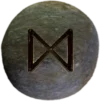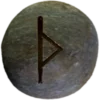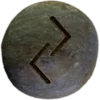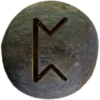Last Updated on February 26, 2025
Table of Contents


History and Symbology
Ragnarök (pronounced “RAH-gna-rohk”), meaning “Twilight of the Gods,” represents the apocalyptic battle in Norse mythology. Other spellings include Ragnarøkkr (RAH-gna-rok-kr), which emphasizes its Old Norse roots. The Prose Edda and the Poetic Edda extensively describe this event, giving us vivid depictions of the catastrophic end. ![]()
According to myth, Ragnarök begins with a series of foreboding omens. Fimbulvetr (pronounced “FIM-bul-vet-er”), a great and endless winter, covers the world in darkness. Humanity succumbs to strife, breaking bonds of kinship. Wolves Sköll (SKOHL) and Hati (HAH-tee) swallow the Sun and Moon, plunging the realms into chaos.
Loki, bound in torment until this moment, breaks free and allies with the jötnar (YOHT-nahr), or giants. Together, they march on Asgard, led by the fire giant Surtr (SOOR-ter), wielding a flaming sword. Heimdallr (HIME-dahl), guardian of the Bifröst, blows his resounding horn, Gjallarhorn (GYAH-lahr-horn), signaling the gods to prepare for their final stand.
The gods meet their fate in combat. Thor battles the serpent Jörmungandr (YUR-mun-gand), slaying it but succumbing to its venom. Odin falls to Fenrir (FEN-reer), the monstrous wolf, though Odin’s son Víðarr (VEE-dar) avenges him. Surtr engulfs the world in flames, reducing it to ash.
Despite the destruction, Ragnarök is not the end. The Eddas describe rebirth and renewal as the Earth rises anew from the sea. A handful of gods, including Baldr (BAL-dur) and Höðr (HUH-thur), return, joined by surviving humans Líf (LEEF) and Lífþrasir (LEEF-thrah-seer), to rebuild a new world of peace.
Runes Associated with Ragnarök
The Elder Futhark rune Thurisaz (ᚦ), pronounced “THOO-ree-saz,” connects to Ragnarök through its associations with chaos and destruction. This rune represents the power of giants, like Surtr and Fenrir, embodying the overwhelming forces that consume the world. ![]()
Another rune, Dagaz (ᛞ), pronounced “DAH-gahz,” signifies transformation and renewal. While Ragnarök involves devastation, Dagaz symbolizes the dawn of a new era. The Earth’s rebirth mirrors the rune’s essence of cyclical change and hope.
Its Importance to Asatruar
For Asatruar, Ragnarök serves as a powerful metaphor for life’s cycles of destruction and renewal. It illustrates how endings lead to beginnings and how courage prevails in the face of inevitable challenges.
The tale inspires practitioners to honor bravery and resilience. The gods’ willingness to confront their fates reflects ideals of duty and strength. Its message of rebirth encourages reflection on personal growth and transformation, even during difficult times.


